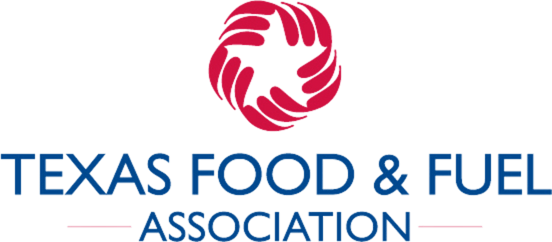Werner Appeal Victory Could Curb ‘Reptile Theory’ Tactics in Trucking Lawsuits
Werner Appeal Victory Could Curb ‘Reptile Theory’ Tactics in Trucking Lawsuits
Werner Appeal Victory Could Curb ‘Reptile Theory’ Tactics in Trucking Lawsuits
June 30, 2025 • By Deborah Lockridge

A victory for Werner Enterprises in a closely watched nuclear verdict appeal could have broader implications in the trend for plaintiff lawyers to focus on “should have” factors that have nothing to do with the actual crash.
The Texas Supreme Court last week overturned a $90 million verdict against Werner that was awarded in a 2018 jury trial over a 2014 crash.
What Happened in the 2014 Crash
On the afternoon of December 30, 2014, the plaintiff and her three children were in a pickup driven by Trey Salinas, traveling eastbound on I-20 near Odessa, Texas. A Winter Storm Warning issued by the National Weather Service was in effect.
Salinas hit black ice and lost control of the pickup truck, crossed the 42-foot grassy median, and crashed head-on into a Werner rig headed westbound at 50 mph.
Plaintiffs alleged that Werner and its driver were at fault, despite the fact that Werner’s driver was traveling well below the posted speed limit, remained in his lane of traffic for the entirety of the incident and was braking before impact, but without enough time to avoid collision.
The company has asserted from the beginning that the accident was non-preventable and that its driver acted appropriately, according to a Werner news release.
However, one child was killed and the other family members were permanently injured.
The Negligence Allegations Against Werner
The plaintiffs sued Werner and its driver for negligence.
They alleged Werner was negligent in training and supervising the driver and in sending an inexperienced trainee driver into winter weather without access to important weather updates, according to the court summary. An expert for the plaintiffs testified that the Werner driver was driving too fast given the icy conditions, or should not have been driving at all.
In the 2018 trial, the jury found both defendants negligent and assigned 70% of responsibility to Werner acting through employees other than the driver, 14% to the Werner driver, and 16% to the pickup truck driver.
More than $100 million in damages were awarded to the plaintiffs, $90 million of that from Werner, making it one of the highest monetary judgments ever seen against a motor carrier.
Werner appealed. An appeals court upheld the jury decision, so Werner appealed to the state Supreme Court. The state's highest court overturned the decision and dismissed the case.
Why The Texas Supreme Court Overturned the Werner Verdict
The Texas Supreme Court ruled that Werner and its driver were “a mere happenstance of place and time,” and that “the sole proximate cause of this accident… was the sudden, unexpected hurtling of the victims' vehicle into oncoming highway traffic, for which Werner and its driver bore no responsibility.”
“This is a long-awaited win for Werner,” said Werner President and Chief Legal Officer Nathan Meisgeier, in a news release.
“After seven years navigating the appellate process, we are thankful the Texas Supreme Court reached the same conclusion as law enforcement — that the Werner drivers and our company did nothing wrong. A different outcome would have had far-reaching implications beyond the transportation industry.”
The Reptile Theory: Why Plaintiff Attorneys Go Beyond the Crash Facts
In the past decade, we’ve heard the rise of the term “reptile theory” — the strategy of a plaintiff lawyer unlocking the jury’s “reptilian brain,” triggering the primitive part of their minds to make decisions based on fear and anger, instead of using logic and applying the facts of the case.
Even if the trucking company wasn’t liable in any way, attorneys are going well beyond the facts of the crash to convince the jury that the motor carrier doesn’t care about the public.
This is what happened in the Werner case, and the Texas Supreme Court pushed back.
In order to establish negligence, the court said, “the proximate cause element requires proof of both but-for causation and substantial-factor causation.”
In other words, there wasn't enough evidence related directly to the crash. Instead, the case had depended on “but-for causation.”
“The sole substantial factor explaining why the accident happened was Salinas losing control of his pickup and crossing in front of the 18-wheeler,” wrote the court. “[The Werner driver’s] negligence if any was too attenuated to constitute a substantial factor.”
According to tortreform.com, the state trooper who investigated the collision noted in his report, it was “truly an accident,” Werner’s driver “didn’t do anything wrong,” and there was nothing “he could have done to avoid the collision.”
Werner argued in its August 2023 brief that if the driver were at fault for his failure to foresee the remote possibility of a driver crossing the median into its path and doing everything possible to avoid it, it could "make a driver 100% responsible for almost any accident.”
The Admission Rule Versus the Reptile Theory
The case hung largely on something called the Admission Rule, which Werner asked the court to adopt in this case.
According to law firm Lewisbrisbois.com, under the Admission Rule, when an employer admits that an employee was in the course and scope of its employment at the time of an alleged incident, evidence of the employer’s hiring, training, or supervision practices becomes inadmissible.
Because Werner admitted it was the employer of the tractor-trailer driver involved in the crash, in many jurisdictions, the Admission Rule would nullify any other causes of actions against Werner. Allegations of factors such as negligent hiring, training, and supervision aren't relevant to the negligence of the employee and would only serve to prejudice the jury.
In the case against Werner the courts did not apply the Admission Rule.
As Tortreform.com put it, “when the trial court ignored the Admission Rule, it opened the floodgates for irrelevant evidence to be used against Werner, with the plaintiff’s attorney even admitting, 'Our case was about everything but the three-second crash sequence.’”
What happened was the jury found Werner and its driver liable for things they should have done.
How Did These Allegations Supposedly Cause the Crash?
The plaintiff attorneys said the Werner driver should have been driving more slowly, even though there was no evidence that his speed contributed to the accident.
Lewis Brisbois offered some examples of the non-relevant factors the plaintiff attorneys used in their argument to the jury alleging Werner's negligence:
- Werner should have built a “command center” for weather monitoring.
- Werner’s head of safety was unqualified because she had not personally driven an 18-wheeler.
- Werner should have installed a temperature gauge on Ali’s truck.
- Werner should have given Ali access to a CB radio in case he might have heard additional information that may have led him to stop instead of proceeding cautiously under the speed limit.
- Werner should have given Ali a company email.
“Notably, none of these ‘should have’ items proximately caused this crash, yet the trial court and 14th Court of Appeals allowed this evidence in as part of a reptile theory against Werner on irrelevant issues,” explained Lewis Brisbois. “[That] this company was so terrible you should punish them, regardless of whether any of our evidence showed the company or its driver’s actions actually caused the subject crash.
“The reptile theory worked. The jury distributed liability amongst Salinas, Ali and Werner – with a whopping 84% of it against Werner and Salinas.”
The verdict was based on evidence that would not have been admissible had the Admission Rule been applied.
Broader Implications of the Werner Supreme Court Victory
In its article about the case last fall, Lewis Brisbois said that the Texas Supreme Court’s ultimate decision would have broad implications.
Making the Admissions Rule a part of legal precedent in the state is good news for trucking companies.
But if the Supreme Court had decided not to adopt the Admission Rule, it would likely have led to an expansion in these type of “reptile theory” tactics and a rise in nuclear verdicts against motor carriers, they said.
While there is a gross negligence exception to the Admission Rule, it was not a factor in this case, pointed out Lewis Brisbois.
As an indication of the significance of the case, amicus briefs were filed by the U.S. Chamber of Commerce, the Texas Trucking Association and Trucking Defense Association, the American Trucking Associations, and the Texas Association of Defense Counsel.
In its brief, the Chamber argued, “Despite filling hundreds of pages of briefing and opinion, the duties and purpose of direct liability here all amount to the idea that Werner should have ensured that [the Werner driver] appropriately looked out for ice and, if he found it, slowed and then stopped to avoid losing control.
"Yet the court of appeals made clear that [the Werner driver] was already obligated to do as much by virtue of having a commercial driver’s license, and nothing obligated Werner to do more.
"The additional liability theories served exclusively to enlarge Ali’s and Werner’s total liability ... from 45% to 84%. And by doing so, these theories all but eliminate liability for [pickup driver] Salinas — the party with the most control over whether any accident happened that day."
